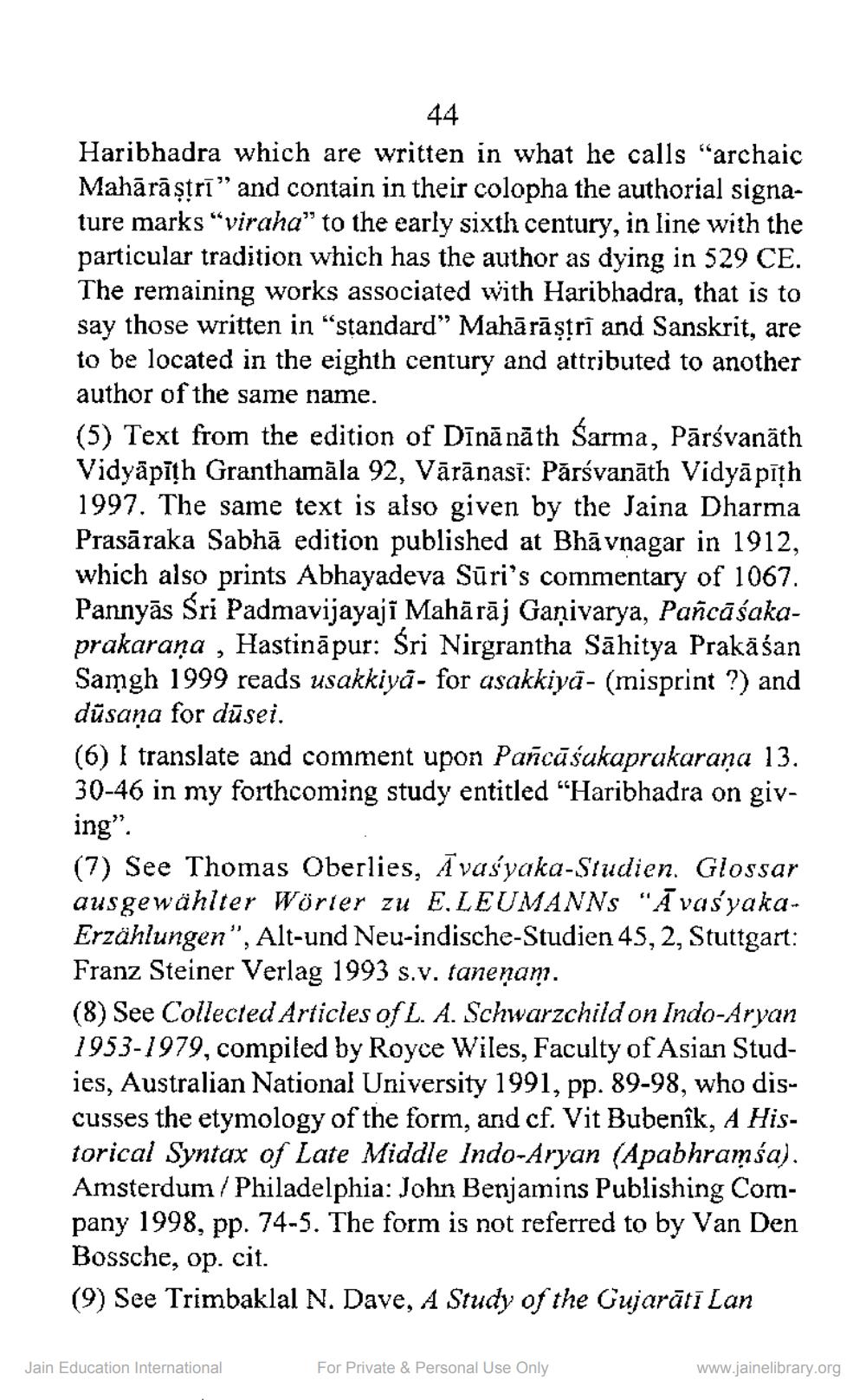________________
44
Haribhadra which are written in what he calls "archaic Mahārāștrī” and contain in their colopha the authorial signature marks "viraha” to the early sixth century, in line with the particular tradition which has the author as dying in 529 CE. The remaining works associated with Haribhadra, that is to say those written in “standard” Mahārāştri and Sanskrit, are to be located in the eighth century and attributed to another author of the same name. (5) Text from the edition of Dīnānāth Sarma, Pārsvanath Vidyāpīth Granthamāla 92, Vārānasi: Părsvanāth Vidyāpīth 1997. The same text is also given by the Jaina Dharma Prasā raka Sabhā edition published at Bhāvnagar in 1912, which also prints Abhayadeva Sūri's commentary of 1067. Pannyās Sri Padmavijayaji Mahārāj Ganivarya, Pancāsakaprakarana , Hastināpur: Sri Nirgrantha Sāhitya Prakāśan Samgh 1999 reads usakkiya- for asakkiyâ- (misprint ?) and düsaņa for dūsei. (6) I translate and comment upon Pañcāśakaprakarana 13. 30-46 in my forthcoming study entitled “Haribhadra on giving". (7) See Thomas Oberlies, A vasyaka-Studien. Glossar ausgewählter Wörter zu E.LEUMANNs "Āvas'yakaErzählungen", Alt-und Neu-indische-Studien 45, 2, Stuttgart: Franz Steiner Verlag 1993 s.v. tanenam. (8) See Collected Articles of L. A. Schwarzchild on Indo-Aryan 1953-1979, compiled by Royce Wiles, Faculty of Asian Studies, Australian National University 1991, pp. 89-98, who discusses the etymology of the form, and cf. Vit Bubeník, A Historical Syntax of Late Middle Indo-Aryan (Apabhramsa). Amsterdum/ Philadelphia: John Benjamins Publishing Company 1998, pp. 74-5. The form is not referred to by Van Den Bossche, op. cit. (9) See Trimbaklal N. Dave, A Study of the Gujarātī Lan
Jain Education International
For Private & Personal Use Only
www.jainelibrary.org




